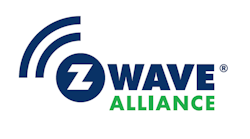Limiting Smart Home Truck Rolls
Z-Wave low-power wireless networking incorporates a time and energy saving feature that can be beneficial for service providers, installers and dealers of smart home control and lifestyle security systems. The Z-Wave Installation and Maintenance Application enables technicians to remotely survey Z-Wave signal quality at every node in the system. A technician can diagnose and repair problems in a home or office, sometimes without any need for to visit, saving time and money for the service provider or installer.
The smart home market, encompassing home automation, home control and home security is booming, expected to rise to some $51.8 billion by 2020. Among wireless protocols available for communicating between devices such as motion sensors and smart locks and the central controller for the system, Z-Wave has emerged as the most widely used, with more than 1,300 certified devices available from 300-plus brands and manufacturers. Besides compatibility with this ever-expanding smart home ecosystem, the advantages of Z-Wave include extremely low power consumption, secure communications and automatic signal routing.
IMA: Diagnosing Z-Wave Networks
Z-Wave's wireless network technology uses a system of radio frequency signal repeaters built into all AC-powered Z-Wave devices, such as lamp dimmers, to provide coverage to large areas while using less power at each battery-powered device, such as door/window sensors. The network automatically routes radio signals, taking advantage of stronger signal paths through these repeaters.
Over time, the home network may change —- a consumer may move a lamp dimmer or other AC-powered device that serves as a repeater. This can cause a network that was once working robustly may become less reliable. For service providers, these problems may become expensive problems to solve when a "truck roll" is required with a technician's visit to the home.
Fortunately, the Z-Wave standard, which is already widely used in smart home, home automation and lifestyle security applications, has a feature called the Z-Wave Installation and Maintenance Application, or IMA to help service providers, custom installers, and others who may have a need to analyze the Z-Wave network. During initial installation, technicians can use IMA to quickly determine where repeaters may be needed and to ensure that the entire system is working robustly.
As its name suggests, the Installation and Maintenance Application is an app or program that resides on the system controller box for the smart home or home security network. The controller box is the central hub for the Z-Wave network, sending signals to devices like door locks to lock and unlock, and to lamp dimmers to shut off while simultaneously receiving signals from devices like motion sensors and window sensors that may indicate an intruder.
The controller can be securely accessed over the Internet, making it possible for the consumer to control the home system remotely, and also enabling the service provider to run IMA remotely.
IMA is thus a powerful diagnostic tool that can be used two ways:
1. During on-site visits where a service technician or installer runs the IMA app on a tablet computer or notebook. This is useful for installation and troubleshooting.
2. Remotely after the installation, the support center can use IMA to provide very detailed tech support.
The remote IMA capability is a key advantage of the Z-Wave protocol for service providers as it helps reduce customer service truck rolls. This remote capability can be used two ways:
- When customers call in with problems: In a typical scenario, a device that was previously working fine has suddenly stopped working. The technician, using IMA, can advise the consumer to move a device to restore signal integrity, or can mail the consumer a repeater to self-install.
- To be proactive and check on a network’s health: The service provider can periodically take network health measurements for diagnostic purposes, to catch problems before they occur.
Z-Wave Compatibility
IMA compatibility is already available in most of today's Z-Wave devices. Technically, this feature is called "Powerlevel Command Class." Beginning with the Sigma Designs 500 series of Z-Wave solutions, Powerlevel CC has been consistently available and earlier model devices had this feature as well. Most Z-Wave devices designed in the past few years, including lamp dimmers, smart switches, thermostats, smoke detectors, door and window sensors, motion sensors, alarms, and other devices are thus IMA-compatible.
In addition, if one Z-Wave device in a customer's home system is not IMA-compatible, the application can still report on everything else in the system that does not depend on the non-compliant device for signal relaying.
Displaying IMA
Service providers can create their own branded user interface, or display application, that serves as the front end for the app. In a typical IMA implementation, network health measurements may be aggregated into a simple indicator for each node in the Z-Wave network, such as red indicating trouble, yellow potential trouble and green a good signal.
If a problem is detected the technician can usually install an inexpensive repeater, or instruct the customer over the phone or via email to install a repeater to maintain robust signal strength. The repeater (when not built into another device) is a very small, unobtrusive box that plugs directly into any AC wall outlet.
With the growing need for installers to quickly set up systems on customer premises and for technicians to fix problems preferably without a truck roll, the Z-Wave Installation and Maintenance Application provides sophisticated tools to speed installations and fix problems.
Cliff Roth is a technical advisor for the Z-Wave Alliance (www.z-wavealliance.org).




